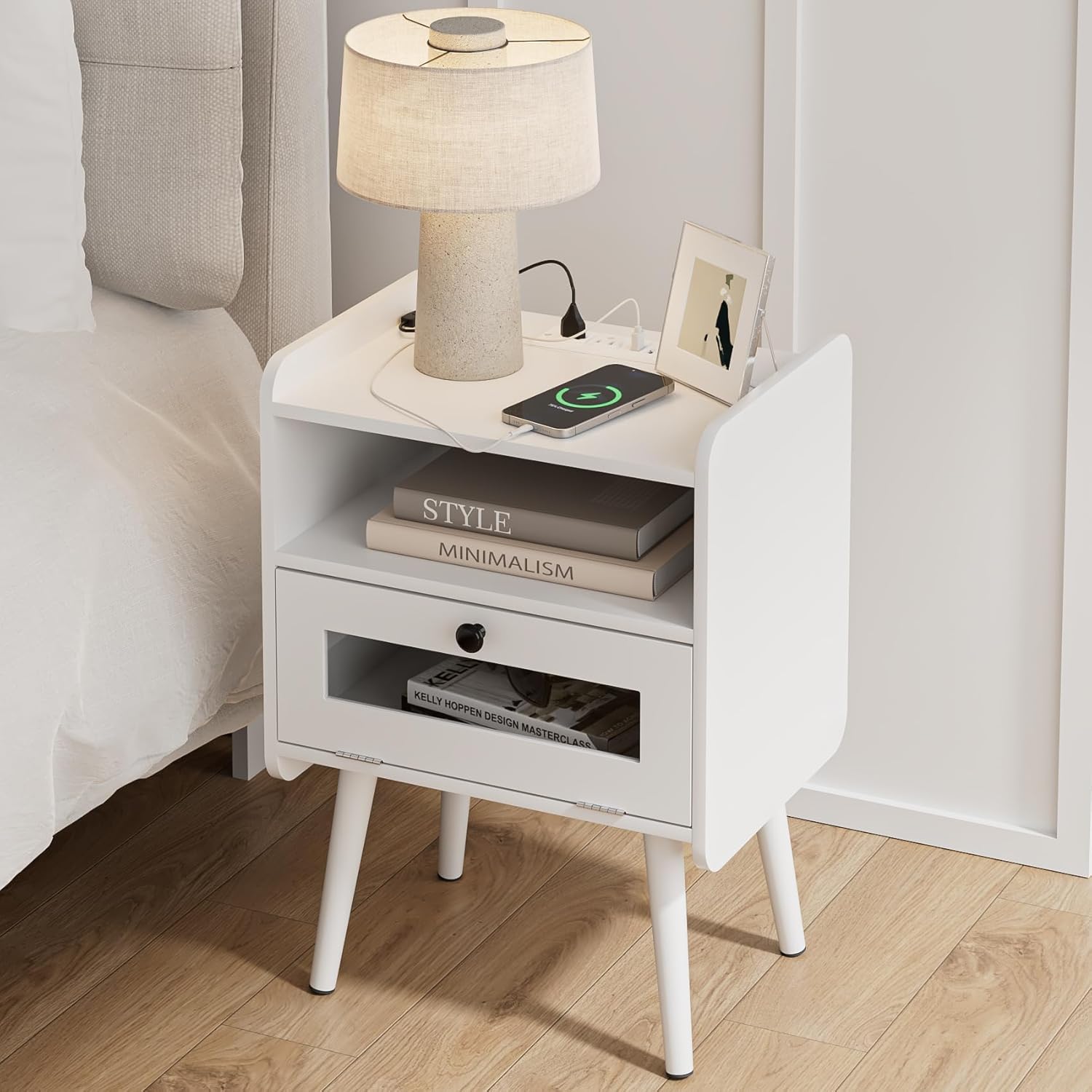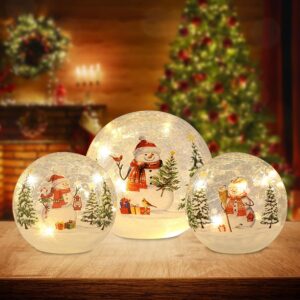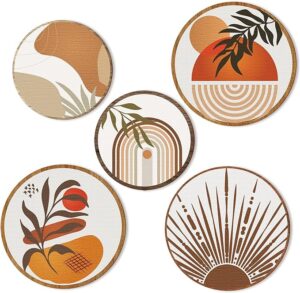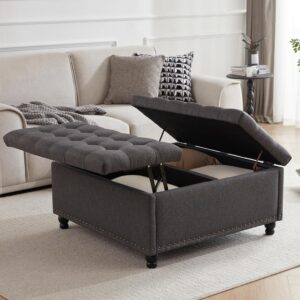When it comes to bedroom decor, the bedside table is often an afterthought, but it’s a piece that plays a significant role in both style and functionality. The right bedside table can enhance your bedroom’s aesthetic while providing essential storage and surface space for your nighttime essentials. Whether you’re revamping your bedroom or starting from scratch, choosing the perfect bedside table can make all the difference in creating a cohesive and comfortable space. On this post, I guide you through the process of selecting a bedside table that’s just right for your room. Find more home decor related posts here.
“Disclosure: Some of the links below are affiliate links. This means that, at zero cost to you, I will earn an affiliate commission if you click through the link and finalize a purchase.”
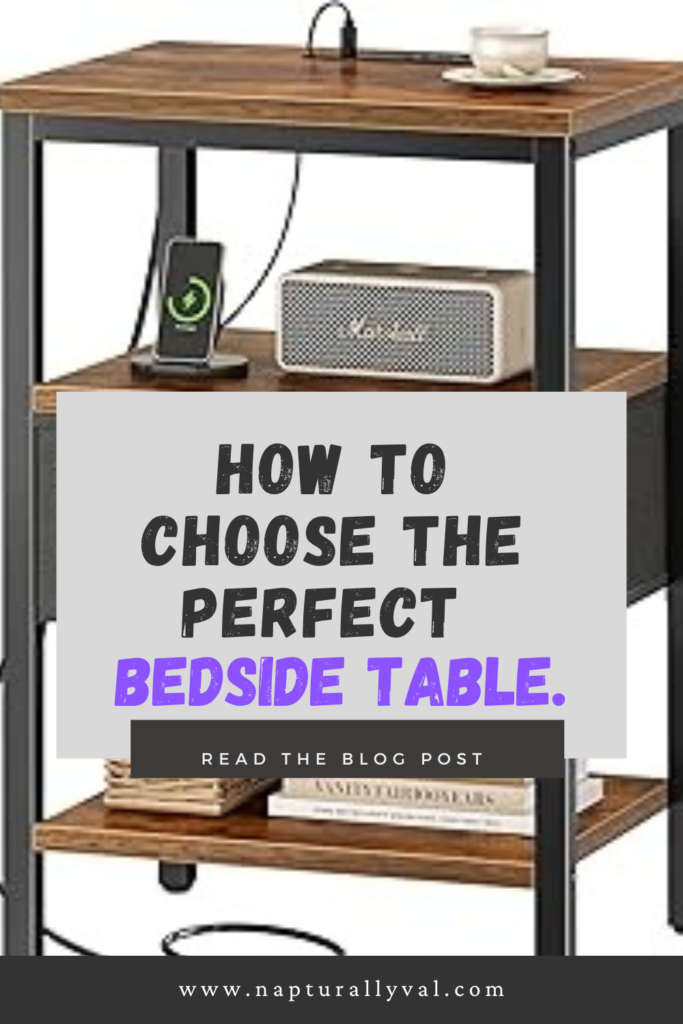
Table of Contents
What to Consider When Choosing a Bedside Table
1. Consider the Size and Proportion
Size is one of the most crucial factors when choosing a bedside table. It’s essential to select a piece that’s in proportion to your bed and the overall size of the room. A table that’s too small or too large can throw off the balance of the space, making it feel awkward or cramped.
- Height: The ideal bedside table height is typically level with the top of your mattress or slightly higher. This ensures easy access to items on the table, like a lamp, alarm clock, or your favorite book. Most beds sit at about 24 to 30 inches off the ground, so your bedside table should be within this range.
- Width: The width of your bedside table will depend on the size of your bed and the space available in the room. For a queen or king-sized bed, consider a table that’s at least 18 to 24 inches wide. For smaller beds, such as twins or fulls, a narrower table around 12 to 18 inches wide will work well.
- Depth: Consider the depth of the table, especially if space is limited. A table with a depth of 16 to 24 inches should provide enough surface area for your essentials without overcrowding the room.
Pro Tip: If you have a large bedroom with plenty of space, consider using two bedside tables on either side of the bed. This not only creates symmetry but also provides additional storage and surface space.
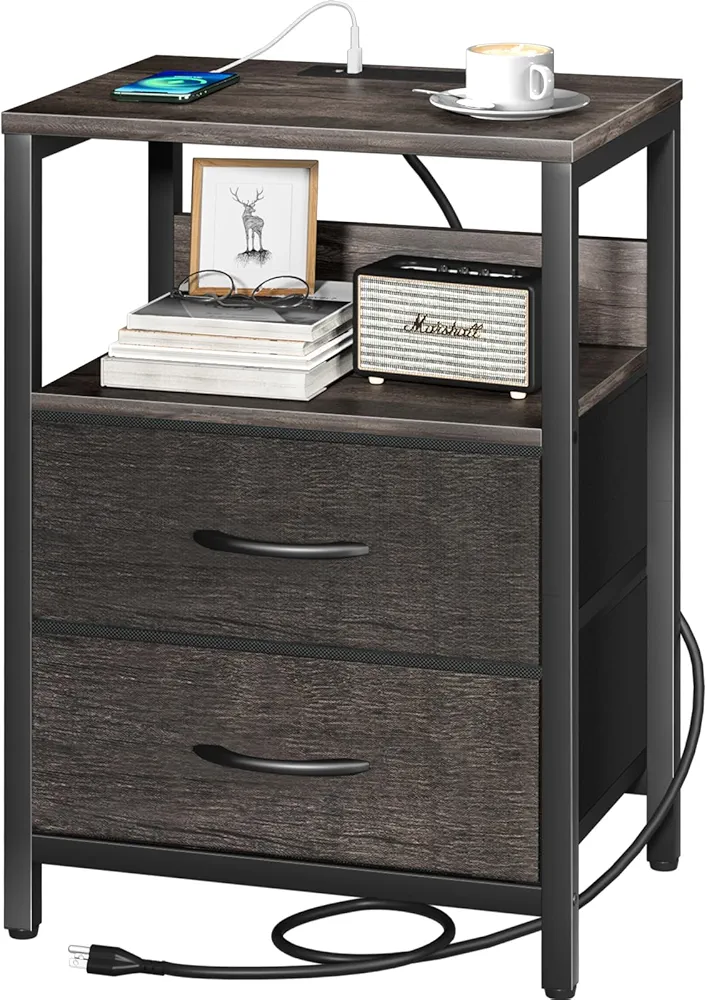
2. Think About Storage Needs
Storage is another key consideration when selecting a bedside table. Think about what you typically keep next to your bed and how much storage space you need. This will help you determine whether you need a table with drawers, shelves, or just a simple tabletop.
- Drawers: If you like to keep things organized and out of sight, a bedside table with one or more drawers is a great choice. Drawers are perfect for storing items like books, reading glasses, remote controls, or chargers. They also help keep your space tidy by hiding clutter.
- Shelves: Open shelves offer a more casual and airy feel. They’re ideal for displaying decorative items, such as a stack of books, a small plant, or a decorative tray. However, they do require a bit more effort to keep organized since everything is on display.
- Minimalist Design: If you prefer a minimalist look and don’t need much storage, a simple table with a flat surface might be all you need. This type of bedside table works well in smaller spaces or in bedrooms with a sleek, modern design.
Pro Tip: If your bedside table doesn’t have enough built-in storage, consider adding a decorative basket underneath to hold extra items like magazines, blankets, or slippers.
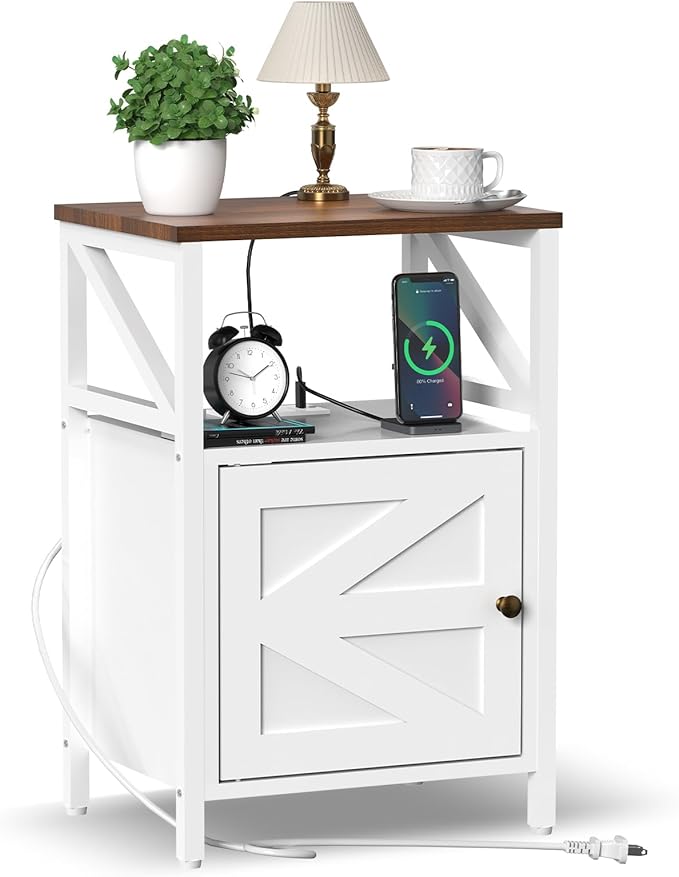
3. Choose the Right Style
The style of your bedside table should complement the overall aesthetic of your bedroom. Whether your decor leans toward modern, traditional, rustic, or eclectic, there’s a bedside table to match.
- Modern: For a modern bedroom, look for bedside tables with clean lines, sleek surfaces, and minimalistic designs. Materials like glass, metal, and high-gloss finishes work well in modern spaces. A simple, unadorned table with a polished finish can add a touch of sophistication.
- Traditional: If your bedroom has a traditional or classic vibe, opt for a bedside table with ornate details, curved legs, and rich wood tones. Traditional tables often feature intricate designs, such as carved accents or decorative hardware, adding elegance and charm to the space.
- Rustic: Rustic bedrooms benefit from bedside tables made from natural materials like wood or metal. Look for tables with a distressed finish, rough-hewn edges, or reclaimed wood to enhance the rustic feel. These tables often have a cozy, lived-in look that adds warmth to the room.
- Eclectic: An eclectic bedroom allows for more creativity and mixing of styles. Don’t be afraid to choose a bedside table that contrasts with your bed or other furniture. A vintage piece, a bold color, or a unique shape can add personality and flair to an eclectic space.
Pro Tip: To create a cohesive look, consider matching the material or color of your bedside table with other elements in the room, such as the bed frame, dresser, or lighting fixtures.
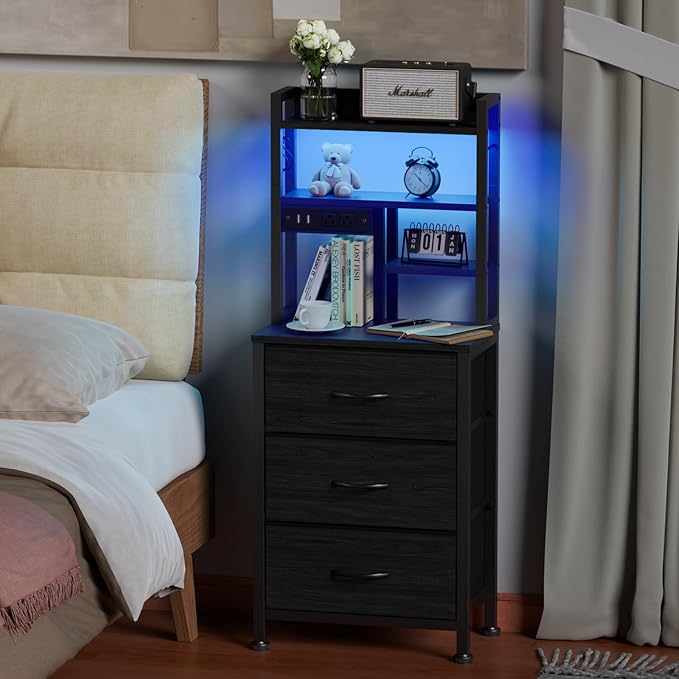
4. Pay Attention to Material and Finish
The material and finish of your bedside table can greatly influence the overall look and feel of your bedroom. When selecting a material, consider both aesthetics and durability.
- Wood: Wood is a classic choice for bedside tables and comes in a variety of finishes, from light oak to dark mahogany. Solid wood tables are durable and offer a timeless look, while wood veneers provide a more affordable option with a similar appearance.
- Metal: Metal bedside tables, often found in modern or industrial-style bedrooms, offer a sleek and contemporary look. They’re typically lightweight and durable, making them a practical choice. Look for metal tables with a powder-coated finish to prevent rust and wear.
- Glass: Glass bedside tables add a touch of elegance and sophistication to any bedroom. They create an airy, open feel and work well in smaller spaces since they don’t visually clutter the room. However, glass surfaces can be prone to smudges and fingerprints, so they require regular cleaning.
- Upholstered: For a soft, luxurious touch, consider an upholstered bedside table. These tables are often covered in fabric, leather, or faux leather, adding texture and warmth to the room. Upholstered tables are perfect for creating a cozy, inviting atmosphere.
Pro Tip: When selecting a finish, think about the other materials in the room. A matte finish offers a more understated look, while a glossy or lacquered finish adds a touch of glamour and reflects light, brightening up the space.
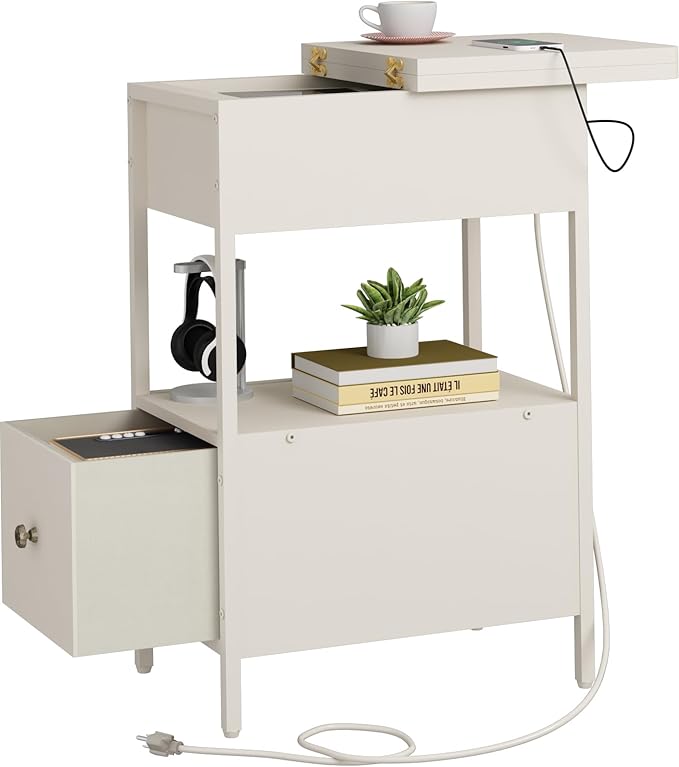
5. Consider Practical Features
Beyond style and storage, practical features can make a big difference in the functionality of your bedside table. Look for features that enhance your convenience and meet your specific needs.
- Built-In Charging Ports: In today’s tech-savvy world, a bedside table with built-in charging ports is incredibly convenient. These tables often have USB ports or power outlets integrated into the design, allowing you to charge your devices without the hassle of cords and adapters.
- Adjustable Shelves: If you like to change up your decor or need flexible storage options, look for a bedside table with adjustable shelves. This feature allows you to customize the height of the shelves to accommodate different items.
- Cable Management: Many bedside tables now come with built-in cable management systems to keep cords organized and out of sight. This feature is especially useful if you have multiple devices that need to be charged overnight.
Pro Tip: If your bedside table doesn’t have built-in charging ports, consider adding a small power strip with USB ports that can be tucked away in a drawer or mounted discreetly to the back of the table.
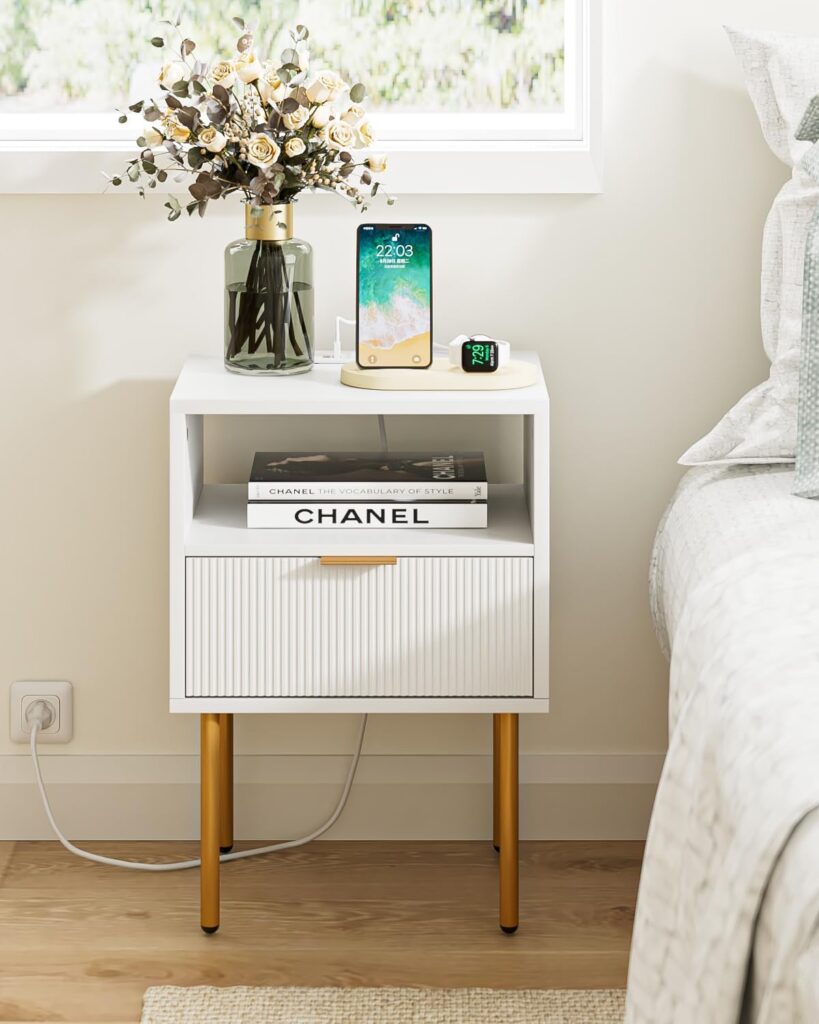
6. Don’t Forget About Lighting
Your bedside table is the perfect spot for a lamp, providing both task lighting for reading and ambient lighting for the room. When choosing a lamp, consider the height and size of the table.
- Lamp Height: Ideally, the bottom of the lampshade should be at eye level when you’re sitting in bed. This prevents glare and provides adequate light for reading or other activities.
- Lamp Size: The lamp should be proportionate to the size of the table. A large, bulky lamp can overwhelm a small table, while a tiny lamp might look out of place on a larger table. Aim for a lamp that complements the scale of the table and the room.
Pro Tip: If you have limited space on your bedside table, consider wall-mounted sconces or pendant lights as alternatives to traditional table lamps. This frees up surface space while still providing ample light.
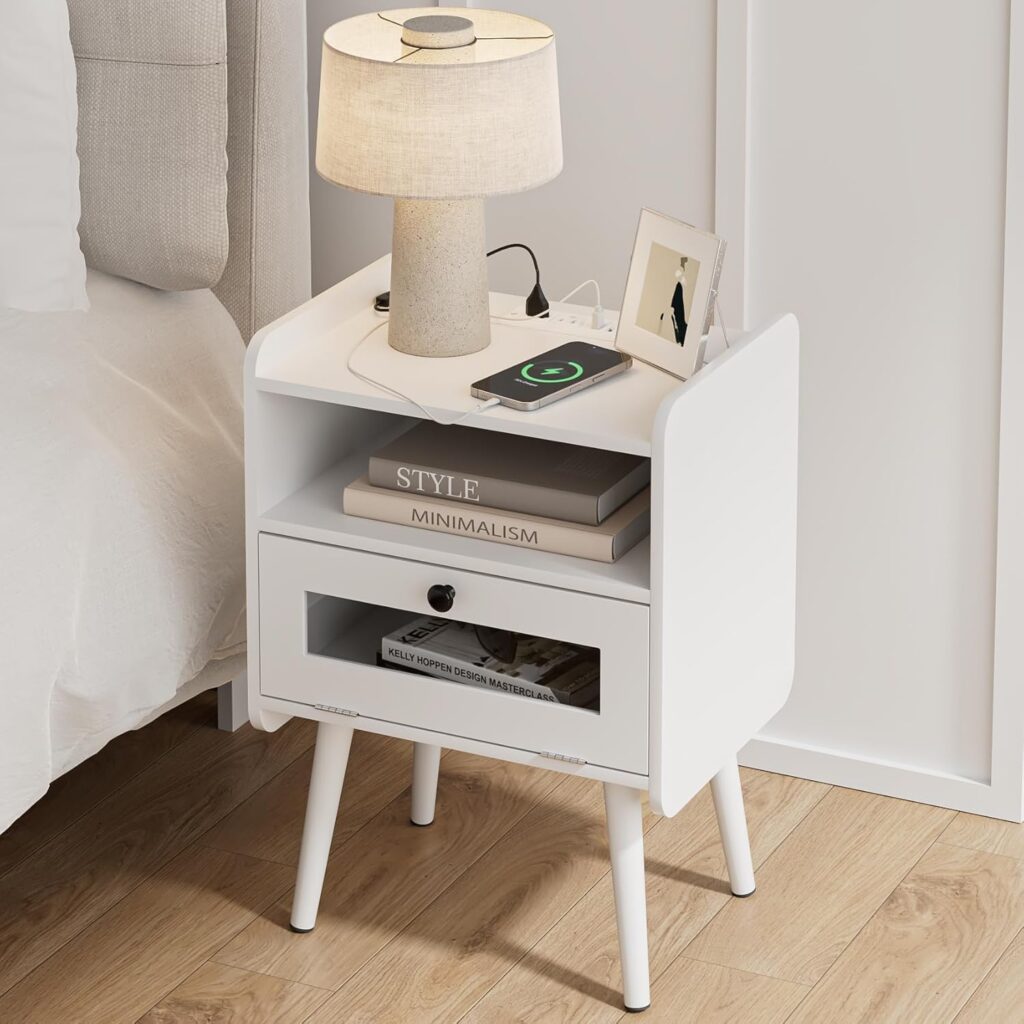
Choosing the perfect bedside table is all about balancing style, functionality, and personal preference. By considering factors like size, storage needs, style, material, and practical features, you can find a bedside table that not only complements your bedroom decor but also enhances your daily routine. Remember, your bedside table is more than just a piece of furniture—it’s a functional and decorative element that can significantly impact the look and feel of your bedroom.

